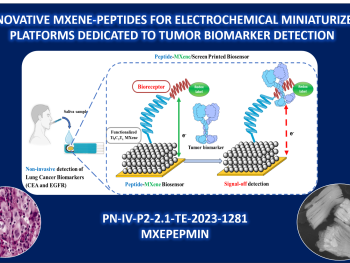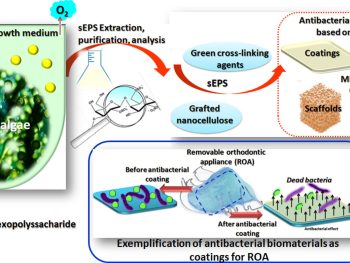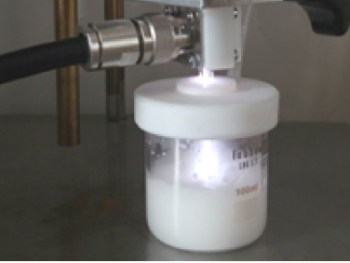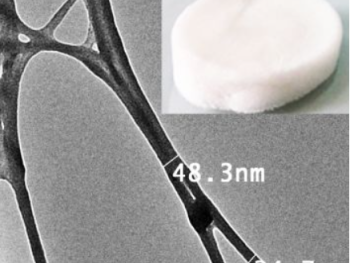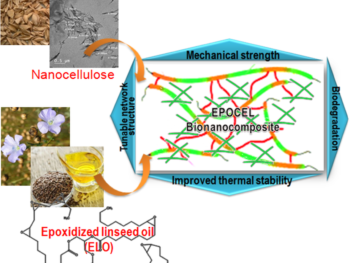SMART POLYMERIC MATERIALS AND NANOMATERIALS
Applied and fundamental research to obtain competitive products at EU level, contributing to increasing the quality of life and health of the population
The field of advanced materials aims to obtain (nano) advanced materials required by different economic fields. Thus, applied and fundamental research is carried out to obtain competitive products at EU level and which contribute to increasing the quality of life and health of the population, increasing the visibility of the institute, partnerships with academia or the private sector and the development of doctoral theses. The field is structured on the following directions with multidisciplinary applications:
- Polymer-inorganic hybrids for bioeconomy, energy and medicine;
- Hydrogels and nanogels with applications in agriculture, environment and medicine;
- Emulsions and microemulsions with applications in pharmacy, cosmetics, environmental protection and self-healing properties;
- Molecularly imprinted polymers for pollutant retention, separation of bioactive compounds and biomimetic sensors;
- Smart materials with applications in medicine, textiles, construction and the automotive industry, for 3D / 4D printing and photo / thermo- and piezo-chromic sensors;
- Immobilizations of microorganisms and enzymes on polymers for biosensors and environmental protection materials;
- Nanocomposites and biocomposites for superhydrophobic films, with photocatalytic self-cleaning properties, biodegradable packaging, membranes, cultural heritage protection, car parts, medicine and biosensors;
- Recycling of polymers for the production of polyols, plasticizers and materials for the construction, electronics and automotive industries;
- Use of advanced polymeric and ceramic materials (membranes, fibres, films, granules, etc.) for the production of energy from unconventional sources and for environmental protection;
- Polymer and colloid systems for CBRN decontamination of surfaces;
- Specific techniques for developing sensors for the detection of persistent chemical warfare agents, nitroaromatic explosives and illicit drugs;
- Polymer composites of recycled PET used for the development of new generations of environmentally friendly missile fuels or for the protection of watercrafts against shock waves resulting from underwater explosions;
- New biomaterials and two- and three-dimensional structures with antimicrobial properties for treating skin infections and regenerative medicine;
- Medical devices (including through the application of 3D printing technology) intended for surgical treatments and antimicrobial coatings;
- New materials with applications in medicine (photosensitizers with anti-tumor / anti-microbial action, through photodynamic therapy / inactivation, formulations for drug vectorization).
International projects
Innovative MXene-peptides for electrochemical miniaturized platforms dedicated to tumor biomarker detection
The goal of MXEPEPMIN is to develop miniaturized biosensors based on innovative MXene-peptide nanomaterials for the detection of lung cancer biomarkers, CEA and EGFR.
“Recycling crustaceans shell wastes for developing biodegradable wastewater cleaning composites – BIOSHELL”
The objective of the project is to obtain functional biopolymer-based hydrogels starting from valorized crustacean’s shell wastes used for metal and antibiotics retention in waters as well for anti-bacterial treatment.
National projects
SUSTAINABLE FUNCTIONAL BIOMATERIALS BASED ON POLYSACCHARIDES FOR ORTHODONTIC ENGINEERING – WASTE2COAT-
The general objective of the Waste2Coat project is the conversion of bio-waste from microalgae cultivation, containing polysaccharides, into new sustainable and functional biomaterials with antibacterial properties for orthodontic engineering.
Molecularly imprinted-solid phase extraction technology for catechin tannins from shrub wooden parts
CATAN-MISPE
Zirconium-modified sol-gel magnetic hybrid materials for advanced heavy metal removal from wastewater
ZIRMAGSOLGEL
Illicit drugs and metabolites quick screening by innovative biomometic sensors – Drug-Scan
Illicit drugs and metabolites quick screening by innovative biomometic sensors – Drug-Scan
Nanocellulose based biocomposites with integrated antibacterial activity by submerged liquid plasma (CELLAB-SLP)
The objective of the project is to develop a new biomaterial with integrated antibacterial activity and a technology to obtain this biomaterial.
Nanocellulose 3-D structures for regenerative medicine (CELL-3D)
CELL-3D has as main objective to design new 3D nanocellulose structures for tissue engineering with chemical, mechanical and structural properties needed in regenerative medicine.
Design of new nanocellulose-based gas-carrier systems
The scope of the CELGAS project is to develop innovative oxygen-carrying systems capable of supplying oxygen in a controlled manner to injured tissue/implants or intravenously.
Synthetic nanogel antibodies molecularly imprinted with the Spike S1 protein -ANTISPIKE
The overall aim of the “ANTISPIKE” project refers to developing original, cost-effective and biocompatible ligand-free nanogel delivery systems that can be used as potential treatment for patients affected by COVID-19
Rational design of composite membranes for advanced heavy metal removal in wastewaters” – I-ON-MEM
The overall objective of the project consists in design of composite membranes for advanced heavy metal removal in wastewaters
Antimicrobial nanocomposites based on polyurethane foam for biomedical applications, synthesized by radiation assisted technology
The main objective of this project is to make a functional model of nanocomposite materials based on polyurethane foam and Ag Np and/or Cu-Au Np, for biomedical applications (i.e. mattresses, surface coverings, floor mats, etc.).
Bio-based nanocomposites from epoxy-celullose with balanced thermo-mechanical properties – EPOCEL
The proposed project aims to develop new nanocomposites, based on renewable and inexpensive biological sources, with thermo-mechanical balanced properties for applications in electronics.
Screen-Printed Hybrid Electrodes for Detecting and Monitoring Lipopolysaccharides
The objective of the project is to design innovative, versatile and re-usable biosensors for the fast, qualitative and quantitative detection and monitoring of lipopolysaccharides in various biological, food or water samples.
Combating the effects of CBRN aggressions using new polyvalent surface decontamination systems POLIDEC
By this project, the partners bring new contributions to the fight against the effects of CBRN agents through the implementation of new multi-purpose decontamination systems.

